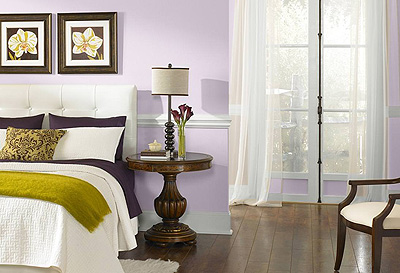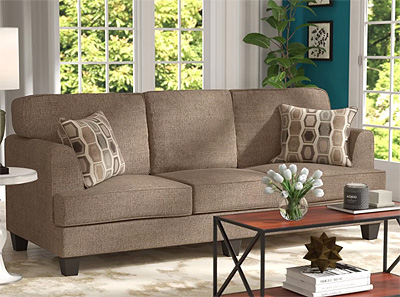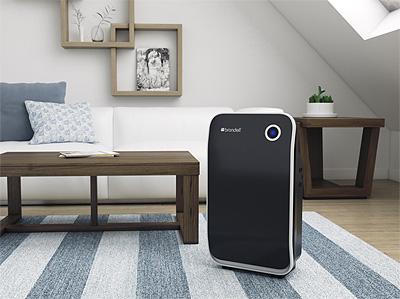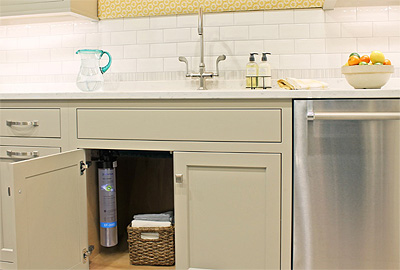by Rachel Lyon, Editorial Director for The House Designers®
Did you know that your home could actually be hazardous to your health? According to the EPA, air pollutants are two to five times higher in concentration inside than outdoors. That includes everything from pet dander, to mold spores, to pesticides, to volatile organic compounds (VOCs)—things that can put you at risk of serious disease. Tap water also poses a risk due to contaminants and the chemicals used to kill dangerous microbes, which vary widely depending on where you live. Creating a healthier environment in your home means knowing how to reduce and remove pollution, so here are some things to keep in mind!

Compare Building and Finishing Products
A healthy house starts with how you make it. Every material you use could pose a problem without your knowledge, most often due to off-gassing. All sorts of products are suspect—wood glue, paint, synthetic finishes, electronics—for all sorts of reasons—formaldehyde, benzene, phthalates, triphenyl phosphate—so be an informed consumer. Research the chemicals used to manufacture the products you need and look for toxin-free and no or low-VOC options. Remember, what they put in can come out in your home for years, so it’s well worth investing the time and money up front to limit the risk.
To help make it simpler for consumers, many companies get their products certified by third parties that test and rate their safety. Look for certifications like Cradle to Cradle™, GREENGUARD®, FloorScore®, and asthma and allergy friendly®, and insist on seeing full product specifications, if necessary. You should also research the standards that each certification sets, because some might have allowances higher than you’re comfortable with. And if you’re disappointed by the manufactured goods you find, seek out small businesses—they often offer less processed, locally sourced options and can explain in detail everything they put in.

Furnish, Accent, and Clean Accordingly
The same issues come with the very items that make a house a home—and you might be surprised to hear that toxic additives were actually legally mandated in the not so distant past. Fire retardants are the main culprits thanks to TB 117, a California law that saw them added to furniture and mattresses, and now they are implicated in a plethora of health concerns including cancer, fertility issues, and low IQ in children. That law was revised in 2013, so toxin-free furnishings can be found, but be sure to study tags and ask questions. Dangerous chemicals can be found in everything from the wood frame, to foam cushions, to surface textiles.
Creating a healthy home environment doesn’t end once you’re all moved and settled in. All kinds of toxins can hitch a ride inside in products that people should but often don’t suspect. Air fresheners are some of the worst culprits, composed of VOCs, known carcinogens, and hormone-disrupting phthalates. By their very nature, they spread these dangers throughout your space so the whole home is affected. Cleaning products can be just as bad due to fragrances, antibacterial agents, and any of the many chemicals that leave fumes. Such products are not required to list ingredients and they are considered proprietary formulations, so you never really know what you’re getting. Look for alternatives that offer transparency or make your own—there are plenty of recipes to be found online.

Invest in Quality Air Filters
Even the most consciously cared for home experiences dust buildup and air infiltration that carries pollutants in from outside. This is where filters can actively improve and maintain the healthy environment you want. Many people assume HVAC filters fill this role, but those are designed to protect the furnace from damaging particulates, not ensure the air you breathe is free from allergens, irritants, and VOCs. And it’s actually better to use smaller, portable air filters—so-called whole-home systems that utilize HVAC ducts need the blower fan to run 24/7 at huge energy cost, and most homes have only a couple of return air grilles that draw in air from hallways, so dust settles in bedrooms long before it can be drawn through the filter.
Portable air filters come in all kinds of shapes and sizes, and even styles to hide in or match your décor. High-efficiency particulate air (HEPA) filters are the gold standard, and they work by forcing air through fine mesh to capture pollutants. If an exceptionally fresh home is your goal, look to activated carbon to trap cooking smells and harmful VOC molecules. Beware ionizing purifiers, though; they create chemically reactive ozone to clean air by attaching to and destroying spores, smoke, etc., but it’s also reactive and damaging to lungs when inhaled. Ozone is great in the upper atmosphere, but it’s a pollutant and a major source of smog down here. Mechanical air filters that take the bad things out of your home are much safer than ionizing models that create a new problem to address the original ones.

Insist on Clean Water on Demand
It’s easy to think that the quality of your tap water is your municipality’s problem to deal with, but we’ve all seen that that doesn’t always work in your favor. Lead can leach from old pipes, hard water can cause unsightly and difficult-to-remove mineral buildup to clog your faucets, and sometimes the scent of chlorine can be downright overpowering and damaging to your hair and skin. It’s not like you can stop using water to drink, prepare food, and wash, so find a water filter that puts your mind at ease. Most basic types reduce these concerns, but you’ll find many that go above and beyond to also address VOCs and pharmaceuticals. Now there are even reverse osmosis systems that can fit under your kitchen sink!
You can choose whether you want to invest in a whole house, or point of entry, filter or those that install under sinks to supply just those faucets. Many homeowners opt for basic sediment or softening systems for the whole home and then place more sophisticated filters where they get drinking water. Considering the amount of water that goes right down the drain by washing clothes and flushing toilets, this is a much better use of resources for the average family.
Creating a healthier home environment is a bit of an undertaking, but it’s well worth the effort and expense. There are plenty of resources to be found online and in your community, so become an informed homeowner and devise a plan to make your space safer and more comfortable!